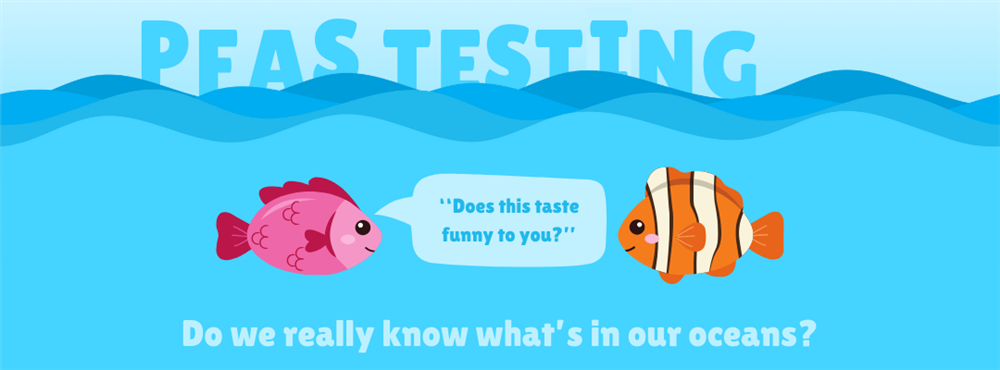
PFAS | Do we really know what's in our oceans?
In the vast expanses of our oceans lies a hidden danger: PFAS. These man-made chemicals, found in everday products, are seeping into our waters, posing risks to marine life and potentially our health.
PFAS have been detected in oceans worldwide, these chemicals enter marine environments through various pathways, including industrial discharges, runoff from landfills, and wastewater treatment plants. Once in the water, PFAS can accumulate in sediment and marine organisms, gradually making their way up the food chain.
The impact of PFAS on marine ecosystems is multifaced. Studies have shown that exposure to PFAS can impair the reproductive and immune systems of aquatic organisms, distrupt hormone function, and cause developmental abnormalities. Additionally, PFAS have been linked to adverse effects on fish behaviour and physiology, potentially altering entire marine ecosystems.
Beyond the ecological implications, there are also concerns about the potential human health risks associated with PFAS-contaminated seafood. As these chemicals bioaccumulate in fish and other marine organisms, they pose a risk of human exposure through the consumption of contaminated seafood. While research on the health effects of PFAS exposure through seafood consumption is ongoing, there is growing evidence linking PFAS exposure to adverse health outcomes such as cancer, immune system dysfunction, and developmental disorders.
Despite the mounting evidence of the dangers posed by PFAS, public awareness and regulatory action lag behind. Many individuals remain unaware of the presence of these chemicals in our oceans and the potential risks they entail. Moreover, regulatory measures to control the production and use of PFAS are often insufficient, allowing these persistent pollutants to continue entering the environment unabated.
Addressing the threat of PFAS in our oceans requires a multifaceted approach involving increased public awareness, stringent regulation, and proactive pollution prevention measures. Individuals can play a role by making informed choices to reduce their exposure to PFAS-containing products and advocating for stronger environmental protections. Additionally, policymakers must prioritize the monitoring and regulation of PFAS emissions to prevent further contamination of our oceans and safeguard marine ecosystems and human health.
In conclusion, the presence of PFAS in our oceans poses a significant but often overlooked threat to marine ecosystems and human health. As we strive to protect and preserve our oceans for future generations, addressing the issue of PFAS contamination must be a priority. Through collective action and informed decision-making, we can work towards mitigating the impacts of PFAS and ensuring the health and vitality of our oceans for years to come.
CONTACT US
Tel: +44 (0) 151 649 4000
Email: marketing@greyhoundchrom.com
FOLLOW US
YOU MAY ALSO BE INTERESTED IN OUR NEWSLETTER







